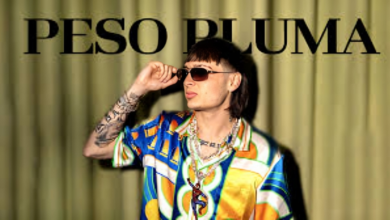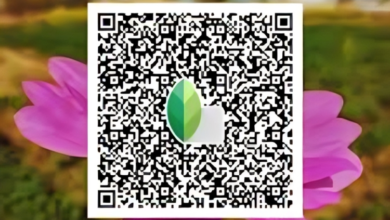The Power of Pink Backgrounds Psychology Aesthetics and Best Uses

Introduction
In the world of design, color plays a crucial role in shaping perception, influencing emotions, and conveying messages. Among the various colors used in digital and print media, pink stands out as a versatile, soothing, and attention-grabbing hue. Whether in graphic design, web design, photography, or interior decoration, a pink background can transform the aesthetics and feel of any project. This article explores the significance of pink backgrounds, their psychological impact, best use cases, and tips for effective application.
The Psychology of Pink
Pink is often associated with femininity, romance, and kindness, but its effects go far beyond these common perceptions. The color psychology of pink includes:
- Calming and Soothing Effects – Studies suggest that pink has a tranquilizing effect, reducing aggression and promoting a sense of relaxation.
- Romantic and Loving Associations – Lighter shades of pink are commonly linked to love, affection, and emotional warmth.
- Playfulness and Creativity – Bright pink hues can evoke excitement, fun, and youthful energy.
- Compassion and Care – Often used in healthcare branding, pink conveys nurturing and support.
- Luxury and Elegance – When paired with gold or black, pink can create a sophisticated and chic look.
Understanding these psychological associations can help designers and marketers make informed choices when using pink backgrounds.
Aesthetic Appeal of Pink Backgrounds
Pink backgrounds have gained popularity across various industries due to their aesthetic versatility. Some key aspects of their appeal include:
- Versatility Across Designs – Pink backgrounds work well with minimalist, vintage, modern, and futuristic designs.
- Enhancing Visual Contrast – Lighter pinks offer a subtle backdrop, while bold pinks create a striking visual impact.
- Adaptability for Branding – Many brands use pink to reflect their personality, from soft blush tones for elegance to neon pinks for vibrancy.
- Instagram-Worthy Aesthetic – Social media influencers and brands favor pink backgrounds for their warm, inviting feel.
Best Use Cases for Pink Backgrounds
1. Graphic and Web Design
Pink backgrounds are widely used in web and graphic design to create engaging, friendly, and aesthetically pleasing interfaces. Some key areas include:
- E-Commerce Websites – Many beauty, fashion, and wellness brands use pink to enhance their online presence.
- Personal Blogs – Writers, influencers, and creatives favor pink for its warmth and approachability.
- Social Media Posts – Instagram carousels, Pinterest graphics, and YouTube thumbnails often use pink backgrounds for an eye-catching effect.
2. Marketing and Branding
Pink is a popular choice for marketing campaigns, especially those targeting specific demographics. Some effective uses include:
- Beauty and Skincare Ads – Pink backgrounds evoke feelings of self-care and femininity.
- Food and Beverage Promotion – Brands selling desserts, smoothies, and candy often use pink to stimulate appetite.
- Event Invitations – Weddings, baby showers, and birthdays frequently use pink backgrounds for invitations and banners.
3. Interior Design
Pink backgrounds are not limited to digital spaces; they play a significant role in interior design as well. Some trending applications include:
- Accent Walls – Soft pink walls can add a touch of elegance to a room without overwhelming the space.
- Office and Workspace Decor – Muted pink tones create a calming and motivating atmosphere.
- Children’s Rooms – A popular choice for nurseries and kids’ bedrooms, pink fosters a cozy and cheerful environment.
4. Photography and Videography
A pink background in photography and videography enhances visual appeal, making subjects stand out. Some key uses include:
- Portrait Photography – Soft pinks flatter skin tones and add warmth to photos.
- Product Photography – Ideal for jewelry, makeup, and fashion product shoots.
- Music and Promotional Videos – Many artists and brands use pink backdrops to create a unique visual identity.
Tips for Using Pink Backgrounds Effectively
- Choose the Right Shade – Different shades of pink convey different emotions:
- Blush Pink – Soft, romantic, and elegant.
- Pastel Pink – Light, airy, and calming.
- Hot Pink – Bold, energetic, and playful.
- Neon Pink – Modern, vibrant, and attention-grabbing.
- Pair with Complementary Colors – Pink pairs well with various colors:
- White and Grey – Creates a minimalist, clean look.
- Gold and Black – Adds a luxurious, high-end feel.
- Navy Blue and Teal – Provides contrast and sophistication.
- Use Texture and Gradients – A flat pink background may sometimes feel plain. Adding gradients, patterns, or textures can enhance visual appeal.
- Ensure Readability – When using pink backgrounds in text-heavy designs, ensure that fonts contrast well for better readability.
- Consider Target Audience – Use pink strategically based on the audience’s preferences. For example, a soft pink might be ideal for a wellness brand, while a neon pink might suit a youth-oriented fashion label.
Conclusion
A pink background is more than just a color choice; it is a powerful design element that influences perception, enhances aesthetics, and communicates brand identity. Whether you are designing a website, creating social media graphics, decorating a space, or taking stunning photographs, the right shade and use of pink can elevate your project to the next level. By understanding its psychological effects, aesthetic appeal, and best applications, you can make the most out of this versatile color in your creative endeavors.



